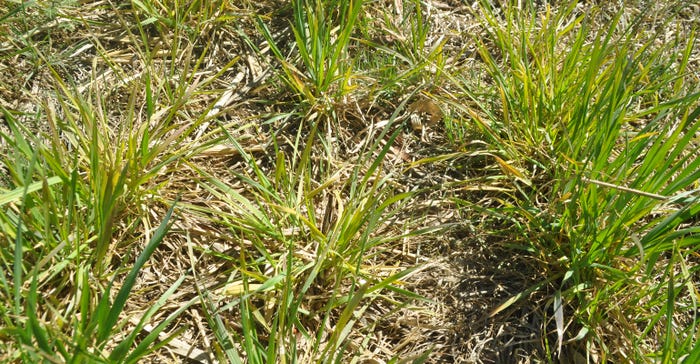
Lane County seedsman Vance Ehmke isn't fond of farmers who let volunteer wheat flourish in their fields after harvest.
That's because he has known for decades that those patches of volunteer wheat are a refuge for one of the most deadly pests that threaten hard red winter wheat in western Kansas — the wheat curl mite, the vector of the deadly wheat streak mosaic virus.
Wheat streak mosaic can cause up to 100% yield loss, depending on the time of year that curl mites arrive in the crop. The bugs, which depend on wind for travel, often arrive too late in the season to cause major damage in the fall and are killed by winter cold. But when they arrive in the fall or early spring, and weather conditions are favorable to their survival, they can cause devastating damage.
"It is almost unheard of to call your crop adjuster in November and tell him that your winter wheat crop has been wiped out," Ehmke says. "This year, that happened."
It happened, he says, in part because of summer weather conditions with far more moisture than in a normal summer season and in part because farmers, for whatever reason, did not wipe out fields of volunteer wheat and created the conditions that allowed thousands of acres of crops to be infected. Those fields allow the wheat curl mite to live and multiply.
"For some people, the volunteer wheat fields are seen as ‘free’ pasture for grazing," he says. "For others, it may be that with prices as low as they have been and still are, there is a problem with coming up with the money to destroy those fields. For a few others, they just don't care enough to expend the energy required to deal with the problem."
In early April, Kansas State University plant pathologist Erik DeWolf was in western Kansas, looking at wheat fields and trying to determine how much damage had already occurred and how much more might be expected as prevailing western and southwestern winds move the wheat curl mite east and northeast during the growing and grain-fill seasons.
DeWolf said there is no geographic boundary for the wheat curl mite and the disease that it spreads. How many fields are infested and how great the damage is done depends on the wind and the weather. Fields as far east as Kansas City and south to the Oklahoma border have been infested by wheat curl mites in past years.
There was already a sizable problem in western Kansas as of early April, with multiple counties reporting issues with wheat streak and more noticing "yellowing" of wheat plants without understanding if the problem was wheat streak or barley yellow dwarf, another viral disease that appears in early spring and is a big problem in central and south-central Kansas this spring.
Wheat plants infected with wheat streak mosaic virus are also more susceptible to other infections such as the High Plains virus, which has similar symptoms. Multiple pathogens mean more yield losses.
DeWolf said nobody knows what the remainder of the growing season will bring, and perfect weather conditions — plenty of rain and not too much heat and wind — could mean the wheat crop has a chance of recovery.
About the Author(s)
You May Also Like




